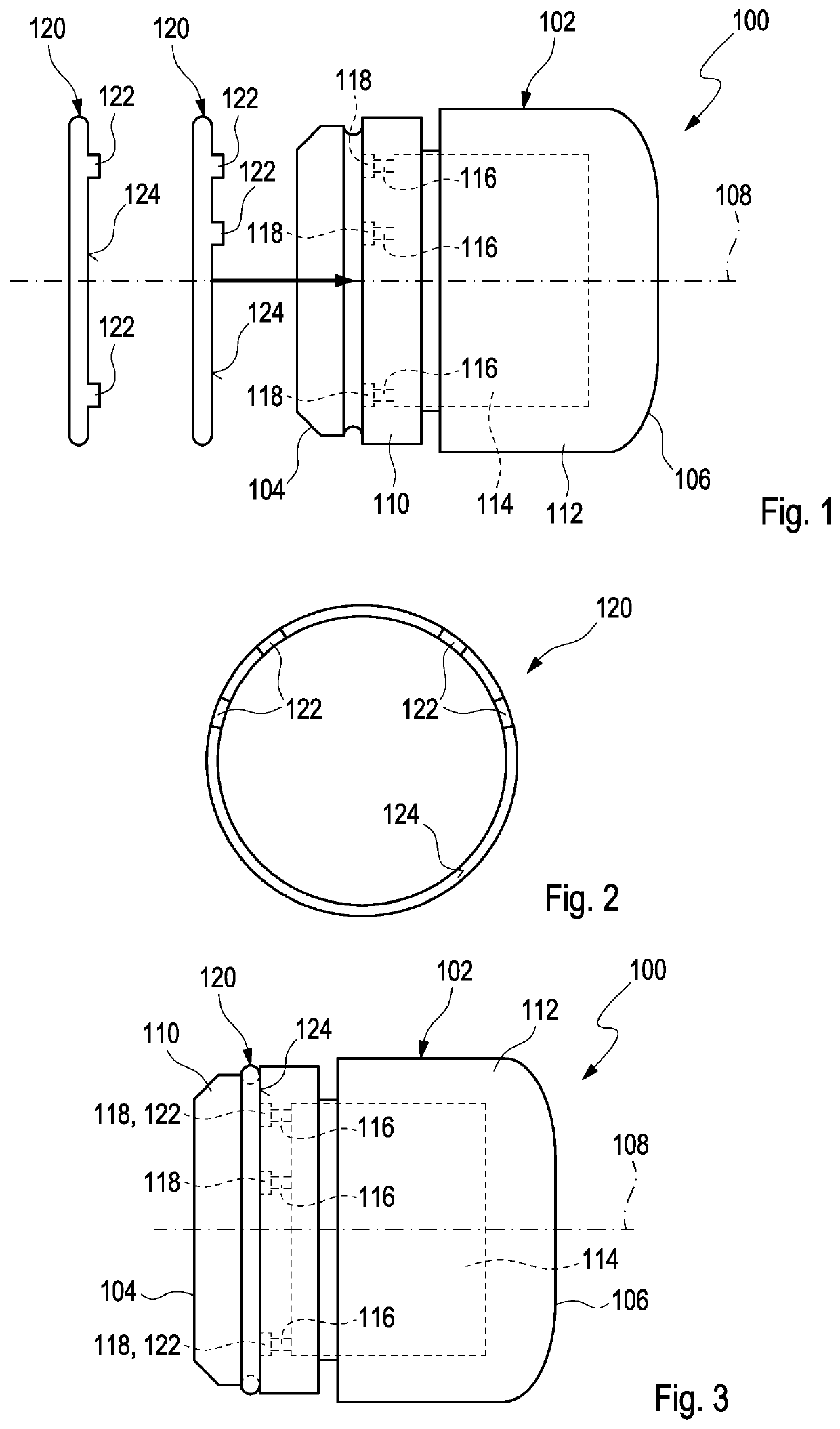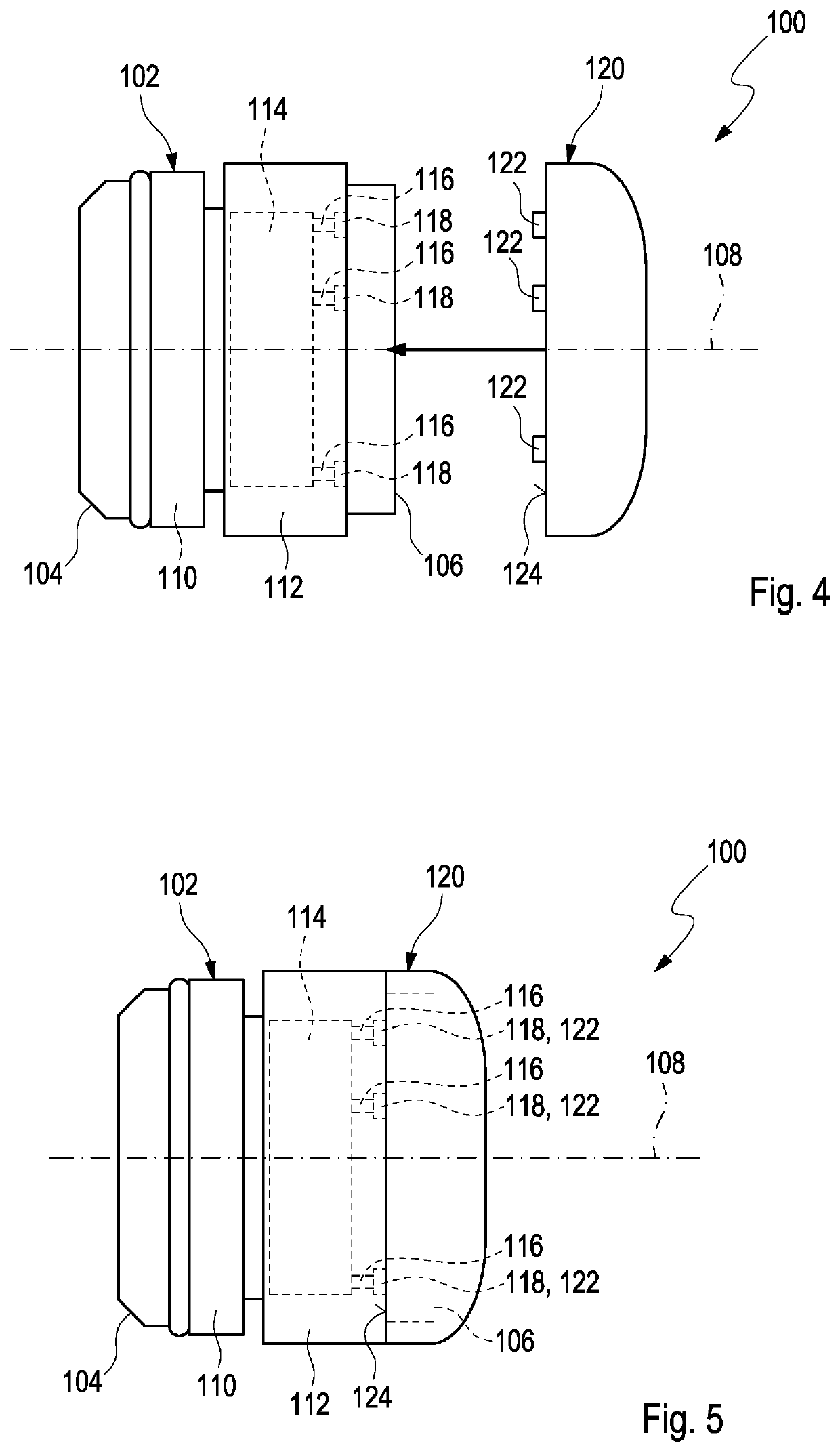Dose Recording Device
- Summary
- Abstract
- Description
- Claims
- Application Information
AI Technical Summary
Benefits of technology
Problems solved by technology
Method used
Image
Examples
first embodiment
[0084]FIG. 1 shows a side view of a dose recording device 100 according to a The dose recording device 100 is configured to be used with a drug delivery device (not shown). The drug delivery device may be a pen-type device, in particular a pen-type injector such as known from WO 2015 / 197755 A1, the constructional details of which are incorporated herein by reference. Basically such a drug delivery device comprises a housing. The housing is adapted and arranged for protecting components of the drug delivery device arranged within the housing from environmental influences. The housing has a distal end and a proximal end. The term “distal end” designates that end of the housing which is or is to be arranged closest to a dispensing end of the drug delivery device. The term “proximal end” designates that end of the housing which is or is to be arranged furthest away from the dispensing end of the drug delivery device. The distal end and the proximal end are spaced apart from one another...
second embodiment
[0097]FIG. 5 shows a side view of the dose recording device 100 with an identifier member 120 mounted on the device housing 102. In order to mount the identifier member 120 to the device housing 102, it is simply moved or pressed axially with respect to the longitudinal axis 108 from the rear end 106. Thereby, the actuation members 122 are inserted into some of the holes 118 and actuate some of the switches 116 located at the end of the holes 118 while other switches 116 are not actuated because no corresponding actuation member 122 is inserted into the associated hole 118. An actuation of predetermined switches 116 causes software instructions of the electronic controller 114 to adjust such that the software runs in a predetermined way. Thereby, the electronic controller 114 provides additional information on the drug such as the type of insulin. If a different identifier member 120 is mounted to the device housing 102, the actuation members 122 thereof are inserted into different...
PUM
 Login to View More
Login to View More Abstract
Description
Claims
Application Information
 Login to View More
Login to View More - R&D
- Intellectual Property
- Life Sciences
- Materials
- Tech Scout
- Unparalleled Data Quality
- Higher Quality Content
- 60% Fewer Hallucinations
Browse by: Latest US Patents, China's latest patents, Technical Efficacy Thesaurus, Application Domain, Technology Topic, Popular Technical Reports.
© 2025 PatSnap. All rights reserved.Legal|Privacy policy|Modern Slavery Act Transparency Statement|Sitemap|About US| Contact US: help@patsnap.com


